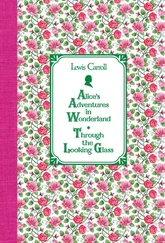FREEDOM WITHIN CONSTRAINTS
After so much to-ing and fro-ing, from nature to culture and back and again, where has the debate ended up? The belief that color naming follows absolute natural laws has turned out to be wishful thinking, as there are exceptions to almost all the rules. And yet the similarities among languages in the choice of foci are still far too striking to be dismissed as haphazard: the great majority of languages still behave in a highly predictable way that would be hard to explain if cultures were free to divide the color concepts entirely at whim. This uneasy balance between conformity and divergence is particularly evident in the order in which color names evolve in different languages. On the one hand, the larger sample of languages reveals exceptions to almost all the predictions: the only rule that has remained truly without exceptions is that red is always the first color (after black and white) to receive a name. On the other hand, the great majority of languages conform to Geiger’s sequence or to the alternative of green before yellow, and this cannot be a mere coincidence.
So the data that have emerged over the past decades leave neither side in the debate-neither culture vultures nor nativist nerds-entirely satisfied. Or, rather, both sides are happy and in business, since they can continue arguing to their hearts’ content about whether color concepts are determined primarily by culture or primarily by nature. (Academics don’t make careers by agreeing with one another.) But anyone who reviews the evidence with a modicum of impartiality will realize that each side simply lays claim to a part of the truth: both culture and nature have legitimate claims on the concepts of color, and neither side enjoys complete hegemony.
In light of all the evidence, it seems to me that the balance of power between culture and nature can be characterized most aptly by a simple maxim: culture enjoys freedom within constraints. Culture has a considerable degree of freedom in dissecting the spectrum, but still within loose constraints laid down by nature. While the precise anatomical basis of these constraints is still far from understood, it is clear that nature hardly lays down inviolable laws for how the color space must be divided. [3]Rather, nature suggests optimal prototypes: partitions that are sensible given the idiosyncrasies of the eye’s anatomy. The color systems that are common among the world’s languages orbit within reasonable distance of these optimal partitions, but languages do not have to follow the prototypes to the letter, so nature’s guidelines can be supplemented or perhaps even overridden by cultural choices.
The explanation for Geiger’s sequence should also be sought in a balance between natural constraints and cultural factors. There is undoubtedly something biologically special about our relation to red: like other Old World monkeys, humans seem to be designed to get excited by it. I once saw a sign in a zoo that warned people dressed in red not to venture too close to the cage of a gorilla. And experiments with humans have shown that exposure to red induces physiological effects such as increasing the electrical resistance of the skin, which is a measure of emotional arousal. There are sound evolutionary reasons for this, since red is a signal for many vital things, most importantly danger (blood) and sex (the female baboon’s big red bottom, for example, signals she is ready for breeding).
But cultural reasons also contribute to the special status of red, and these ultimately boil down to the fact that people find names for things they feel the need to talk about. The cultural importance of red is paramount in simple societies, above all as the color of blood. [4]Moreover, as Gladstone suggested in 1858, the interest in color as an abstract property is likely to develop hand in hand with the artificial manipulation of colors, when color comes to be seen as detachable from a particular object. Red dyes are the most common and least difficult to manufacture, and there are many cultures that use only black, white, and red as artificial colors. In short, both nature and culture give red prominence over other colors, and this agreement must be the reason why red is always the first prismatic color to receive a name.
After red, yellow and green are next in line, whereas blue comes only later. Both yellow and green appear brighter to us than blue, with yellow by far the brightest. (As explained in the appendix, the mutation in the primate line that brought about the special sensitivity to yellow increased our ancestors’ ability to spot ripe yellowish fruit against a background of green foliage.) But if it was simply brightness that determined the interest in naming colors, then surely yellow, rather than red, would have been the first color to be given a separate name. As this is not the case, we should seek the explanation for the precedence of yellow and green over blue in the cultural significance of these two colors. Yellow and green are the colors of vegetation, and the difference between them (for example with ripe and unripe fruit) has practical consequences that one might want to talk about. Yellow dyes also happen to be relatively easy to make. The cultural significance of blue, on the other hand, is very limited. As noted earlier, blue is extremely rare as a color of materials in nature, and blue dyes are exceedingly difficult to produce. People in simple cultures might spend a lifetime without seeing objects that are truly blue. Of course, blue is the color of the sky (and, for some of us, the sea). But in the absence of blue materials with any practical significance, the need to find a special name for this great stretch of nothingness is particularly non-pressing.

A lot of water has flowed down the Scamander since a great Homericist, who occasionally dabbled in prime ministry, set off on an odyssey across the wine-dark sea in pursuit of mankind’s sense of color. The expedition that he launched in 1858 has since circled the globe several times over, been swept hither and thither by powerful ideological currents, and got sucked into the most tempestuous scientific controversies of the day. But how much real progress has actually been made?
It is a sobering thought that, on one level, we are hardly further advanced today than Gladstone’s original analysis of 1858. So sobering, in fact, that you would be hard-pressed to find contemporary accounts owning up to it. If you look up the subject in linguistic discussions, you will be lucky to find Gladstone mentioned at all. If he does make an entrance, he will be relegated to a perfunctory “pioneering efforts” footnote, reserved for those whom one feels one ought to mention but whom one cannot be bothered to read. And yet Gladstone’s account of Homer’s “crude conceptions of colour derived from the elements” was so sharp and farsighted that much of what he wrote a century and a half ago can hardly be bettered today, not just as an analysis of Homeric Greek but also as a description of the situation in many contemporary societies: “Colours were for Homer not facts but images: his words describing them are figurative words, borrowed from natural objects. There was no fixed terminology of colour; and it lay with the genius of each true poet to choose a vocabulary for himself.” In one oft-quoted passage, for example, the anthropologist Harold Conklin explained why the Hanunoo in the Philippines call a shiny, brown-colored section of newly cut bamboo “green”-essentially, because it is “fresh,” which is the main meaning of the “green” word. Conklin probably never set eyes on Gladstone’s explanation for why Homer used chlôros for brownish fresh twigs. But anyone comparing their analyses might be forgiven for thinking that Conklin simply lifted his passage wholesale from Studies on Homer and the Homeric Age .
Читать дальше












